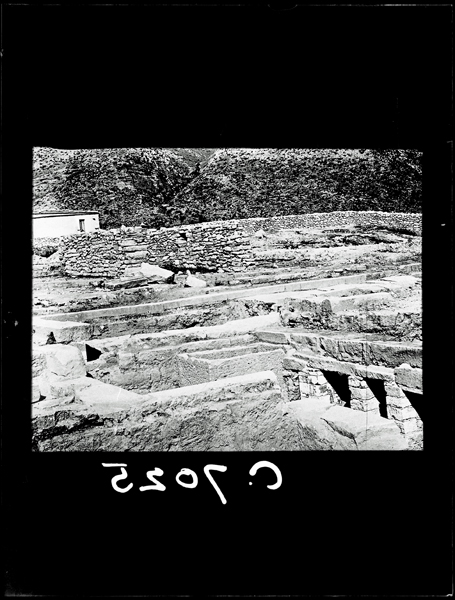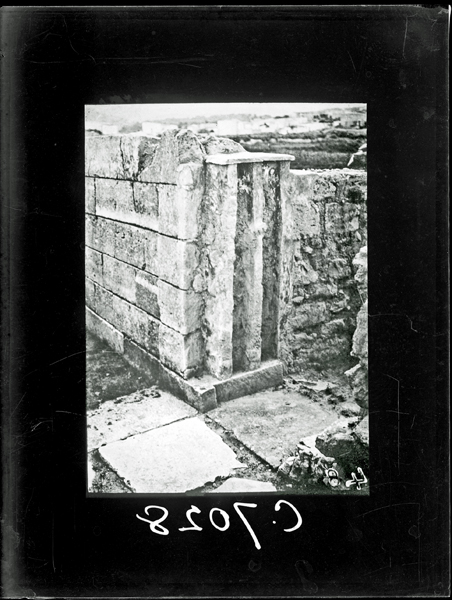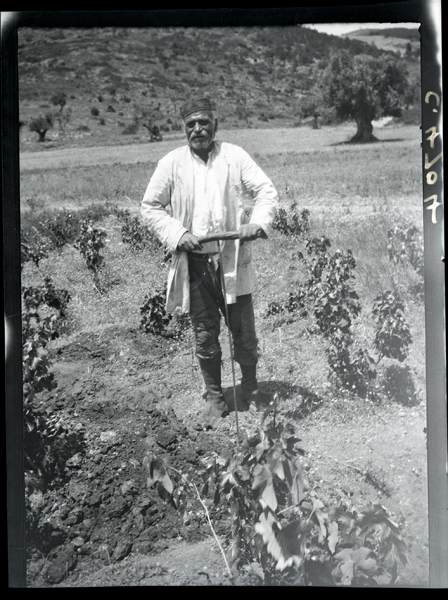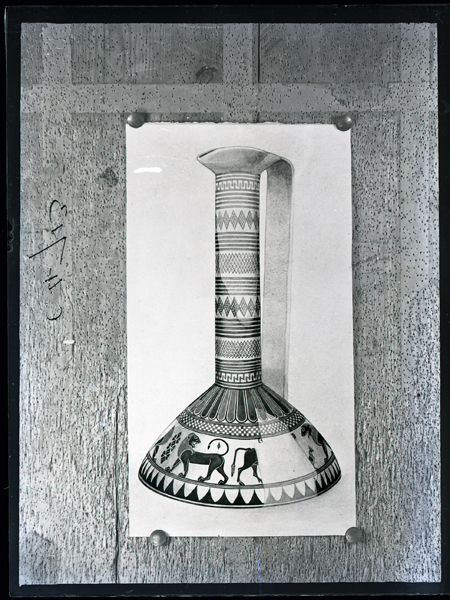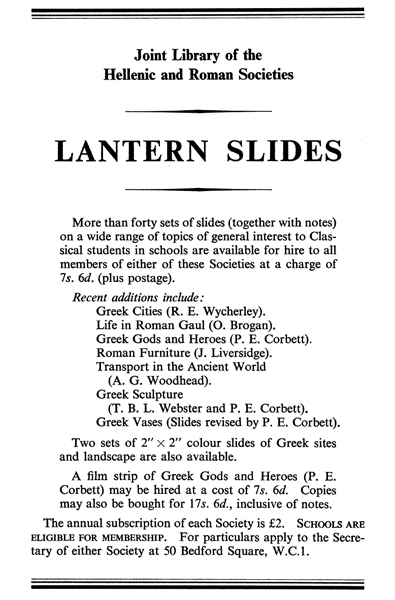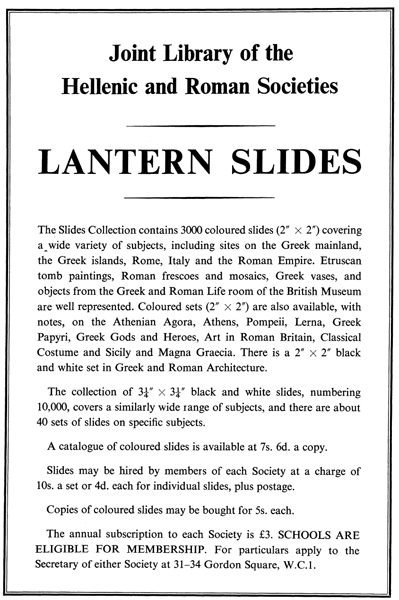The Gradual Decline and Reinvention of the SPHS Photographic Collection
Rubbish Theory, Michael Thompson’s classic 1979 study, takes a look at the dynamics of material value. It begins with the new, extends to the useful that gradually devalues over time until it becomes rubbish. However, some material goods – Thompson’s class of ‘durables’ – begin to acquire value again. The life cycle of the Society for the Promotion of Hellenic Society (SPHS) photographic collection is a prime example of this theory in action. This Archive Story looks at the gradual decline during the collection’s later days while it was still in use – the devaluing process – and its rebirth, phoenix-like, as a valuable archive.
The SPHS photographic collection began in the latter part of the 19th century (see Archive Story: Rule II) and came to a gradual end nearly a century later in the mid-20th century. Investigating beginnings – new ventures and ideas – generally tends to be more exciting than examining endings, but the endings can provide just as much information about the composition and use of a collection, such as chronicling changes of focus and the impact of new technologies. These things can also point to why the collection came to its useful end.
The decade of the 1930s saw a few subtle changes in the SPHS collection. Between 1930 and 1931 a comprehensive slide catalogue was created, updating the previous 1913 catalogue, although annual slide accession lists were published in the Journal of Hellenic Studies (JHS) from 1914 until the end of the 1930s. The last detailed report of the library and photographic collection committees published in the Proceedings for the SPHS was in the 1932 JHS which records the decision not to publish the most recent slide catalogue due to prohibitive printing costs. The catalogue, however, was made available for consultation in the SPHS library. Reports from the photographic collection committee after this time were likely still made, but they were not published. The last annual slide accession list was in 1939. Two images from Dame Joan Evans in the BSA SPHS collection were recorded in this list, both of which are of the site of Tylissos on Crete. Joan Evans donated numerous other images of Crete at the same time, but these were not acquired by the BSA when it received a selection of the SPHS photographic collection in 2003.
Most of J.A. Spranger’s photographs (see Archive Story: Fragmented Archives) fall into the time period of the 1930s. His images are one of the last large collections donated by an individual to the SPHS. Similarly, one of the last institutional donations by the BSA were images from Humfry Payne’s 1930s excavations at Perachora. A number are now included in the BSA SPHS image collection. All are copy negatives or small prints pasted onto index cards. Some were reproduced in 1936 (the same year that Payne died as a result of a staphylococcus infection) for use in the Exhibition at Burlington House London (see Archive Story: 1936: Exhibition Season). According to the negative register, in 1940, Payne’s widow, Dilys Powell, donated a group of negatives to the SPHS collection, produced from plates in the posthumous volume, Perachora: The sanctuaries of Hera Akraia and Limenia. Excavations of the British School of Archaeology at Athens 1930-1933, that was published the same year. All of these later negatives were reproduced as slides and, supplanted the earlier donation since many depicted the same objects. None of these latter images donated in 1940 are represented in the BSA-SPHS collection.
Despite WWII, there were new entries to the photographic collection listed in the SPHS photographic register during the 1940s – most from publications and primarily at the request of individual scholars. One last – separate – accession list was published in the Front Matter of the 1946 JHS. Most of the slides listed fell into the category of Roman, particularly Roman Britain. However, there were a few of ‘Prehellenic’ slides, including a group of negatives were made specifically for the published report of the BSA of excavations carried out in 1939 and early 1940 at Knossos, published in Archaeological Reports for 1939-45. Later in the 1940s and into the early 1950s, many negatives were entered into the register for specific slide sets. The teaching sets of slides which were accompanied with text appear to be a major focus at this time.
The BSA-SPHS collection does not contain any negatives produced in the 1940s and only a few from the 1950s. The latest are from several image donations from Sinclair Hood in 1953, the year before he became the Director of the BSA. Interestingly, they are all copy negatives and all are the same standard size as lantern slides (3 ¼ inch square). There are a total of 41 images in the Hood donation, all of which were said to have been reproduced as lantern slides – effortlessly produced from the negatives on a 1:1 scale. They are a mixture of travel photographs and photographs of plans and reconstructions. The travel photographs are of typical places one would visit in Attica (Rhamnous, Vari, Sounion, Athens Acropolis and Agora), on the Peloponnese (Corinth, Mycenae, Sparta, Messene and Megalopolis) and Crete (Knossos and Lasithi). Hood may have photographed a few places in Asia Minor (Pergamon, Manisa and Ialysos on Rhodes) after participating in the BSA excavations at Old Smyrna. Nearly all of his final donation of images on 30 November 1953 were plans, reconstruction views and images of plaster models of ancient cities (Olynthos, Priene, Pergamon, Miletus and Assos) and the Athens Acropolis and Agora, likely intended for teaching.
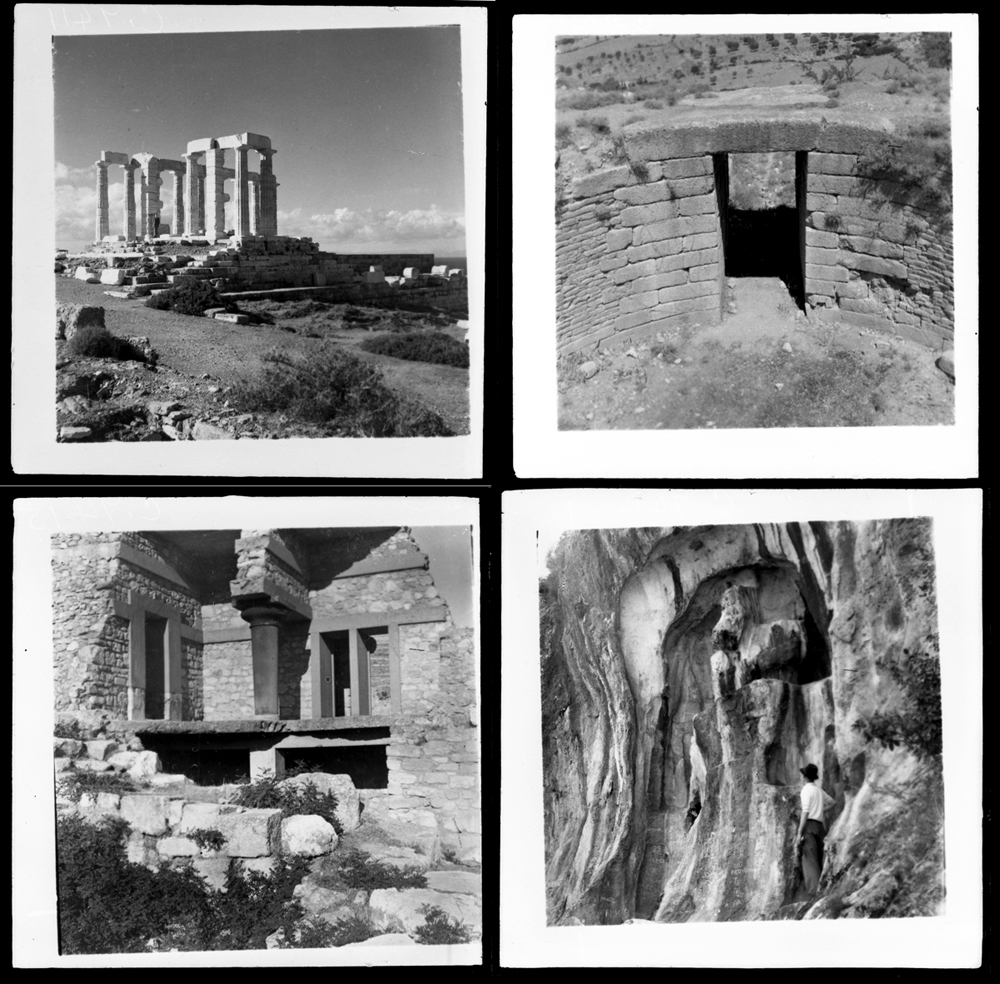
Top: Left. BSA SPHS 01/6860.C7411. Temple of Poseidon at Sounion; Right. BSA SPHS 01/6866.C7417. Mycenae: Lion’s Tomb. Bottom: Left. BSA SPHS 01/6864.C7415. Knossos: S. House; Right. BSA SPHS 01/6863.C7414. Manisa: Niobe’s Rock on Mount Sipylos
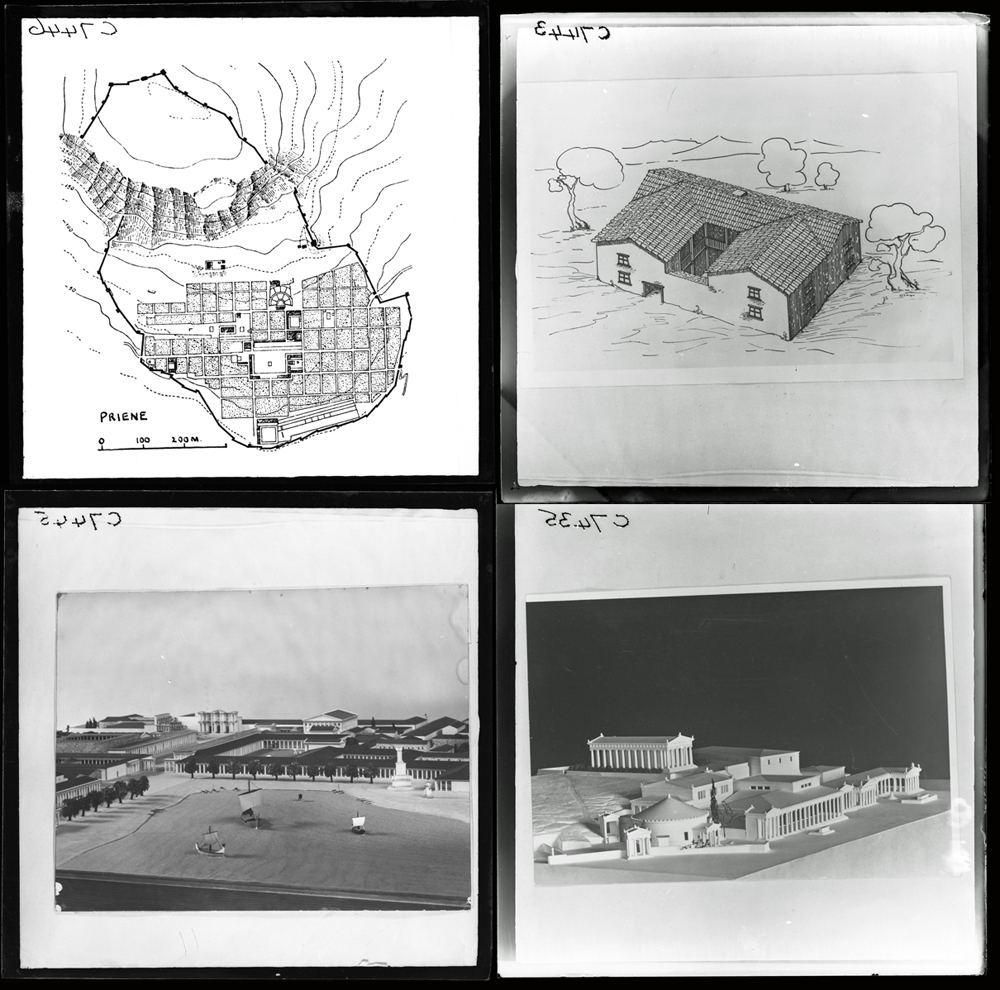
Top: Left. BSA SPHS 01/6889.C7446. Priene: plan of town and walls; Right. BSA SPHS 01/6886.C7443. Olynthos: reconstruction (drawing) of house. Bottom: Left. BSA SPHS 01/6888.C7445. Miletus: model of harbour, view from N; Right. BSA SPHS 01/6878.C7435. Athens: Model of the W side of the Agora
By mid-20th century, the image collection was slowly being replaced by a new set of smaller colour slides (35mm slides in 2 inch x 2 inch mounts). The 1956 JHS has a brief advertisement of the image collection which listed – in this order – the old black and white negatives, the new colour slides and a film strip. This was the first published mention of the colour slides. Although 35mm slides existed as early as the 1930s, they only came into common usage in the late 1950s and the 1960s. It is not surprising that they are beginning to make their appearance in the SPHS Collection around this time. The new colour processes such as Kodachrome, were vastly superior in faithfulness of colour, clarity, and speed of application to the old Paget, ‘additive’ process that had been used to produce the colour slides first listed in 1913 slide catalogue. The film strip that was mentioned consisted of static images culled from the image collection with a recorded narrative – an animated form of a slide set with text. In fact, the old negatives seemed to be of value particularly as part of an extensive list of 40 slide sets designed for teaching as the 1956 advertisement stresses.
- 1956 Advertisement for the SPHS lantern slide collection
- 1968 Advertisement for the SPHS lantern slide collection
The latest dated entries in the SPHS negative register are marked January 1963. According to a note in the Minute Book of the Slides, Photographs and Filmstrips Committee (1949-1983), held in the Hellenic and Roman Library at the Institute of Classical Studies (London), the old photographic collection officially became inactive and was placed in storage in 1967. This is reflected in the 1968 JHS advertisement for the image collection where the old lantern slide collection was now relegated to second place and stressing their value in the slide sets. By 1973, the old collection was completely dropped from mention in the JHS. The collection was considered useless, taking up space SPHS storage, and ultimately, by the beginning of the 21st century, earmarked for disposal. To save the collection, in 2003, the BSA acquired thousands of negatives, a few hundred slides and index cards with the remainder of what survived of the Greek series was transferred to the Hellenic Literary and Historical Archives (since 2009 part of the National Bank of Greece’s Cultural Foundation, MIET-ELIA) in Athens.
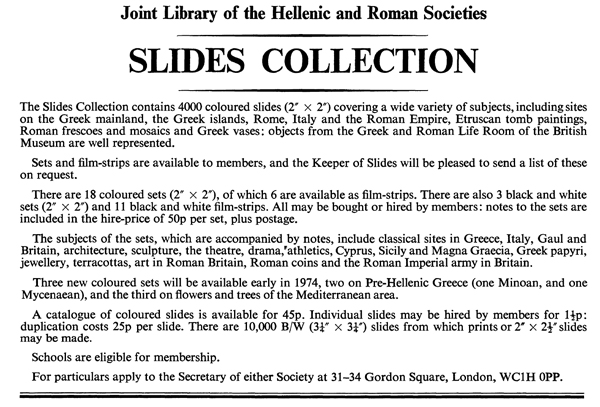
1973 advertisement for the new slide collection. Published in the Front Matter of the Journal of Hellenic Studies.
Old photographic collections have often been used as convenient libraries of historical images to ‘mine’ for publication illustrations (often taken out of context) or, for heritage purposes to document changes to places or monuments over time. However, they also have a potential analytical use. By the end of the 20th century, visual anthropologists and cultural historians were becoming interested in the interpretation of visual representations: understanding why images (collectively and individually) were conceived and how they were perceived and engaged with through time. Old image collections took on a new lease of life at this point, providing scholars with large visual datasets, examples of Thompson’s ‘durable’ class of material. The SPHS image collection was one such dataset, now viewed as a valuable archive. Taken in historical context, the SPHS collection – as a whole, as groups of images, and even as single images – have the potential to allow us to research and discern past practices and perceptions of the Hellenic world.
Deborah Harlan
British School at Athens
Images from the BSA-SPHS collection are available on the BSA’s Digital Collections page.
Click here for more BSA Archive Stories.
Further Reading
Dunbabin, T.J. (ed) 1940 Perachora. The sanctuaries of Hera Akraia and Limenia. Excavations of the British School of Archaeology at Athens 1930-1933. vol. I
Dunbabin, T.J. 1944. ‘Archaeology in Greece, 1939-45’, Journal of Hellenic Studies, 64: 78–97.
Thompson, M. 1979. Rubbish Theory: The Creation and Destruction of Value. Oxford: Oxford University Press.

